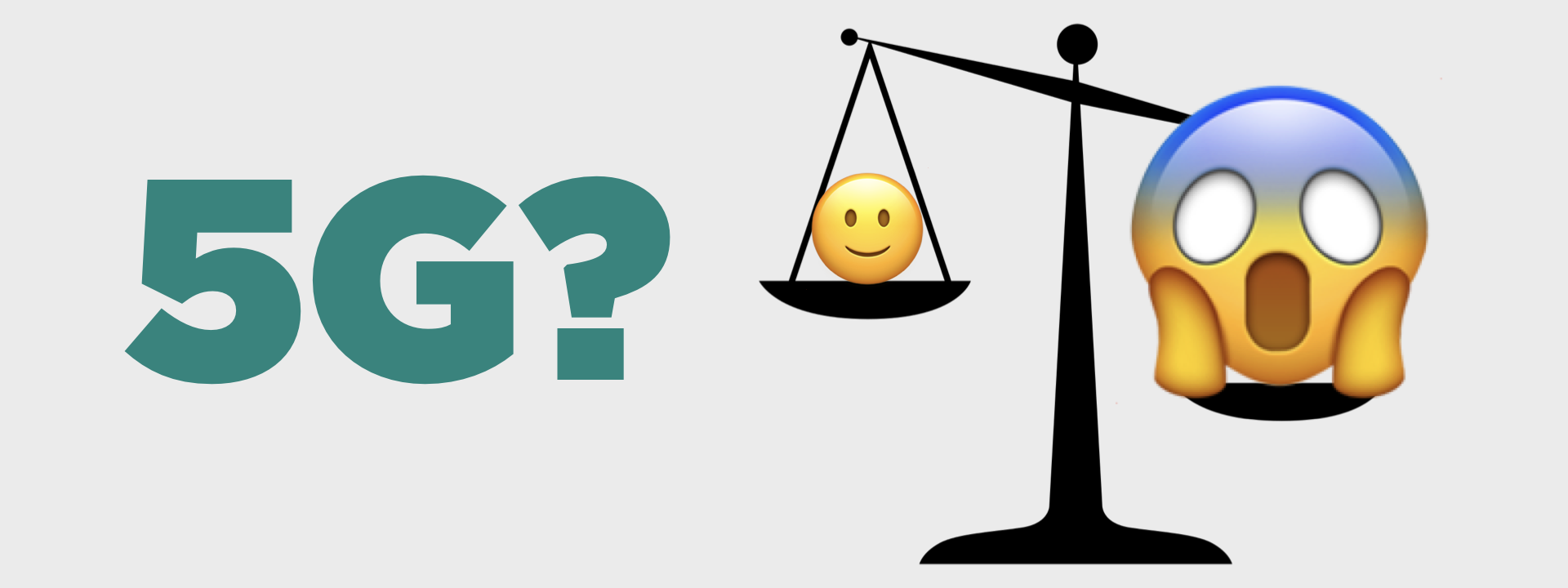Anti-5G conspiracy theories dominate on social media
Top five most engaged-with articles on social media every month about 5G for the past year were anti-5G
Anti-5G conspiracy theories dominate on social media

Top five most engaged-with articles on social media every month about 5G for the past year were anti-5G

Anti-5G stories about the alleged harmful effects of 5G technology engaged social media users more than pro-5G news about infrastructure developments, according to BuzzSumo, a social media listening tool.
The DFRLab’s findings suggested that sensational stories based on misrepresented or unverifiable scientific facts against 5G drive more engagement on social media. In recent years, conspiracy theorists and disinformation actors, most notably Kremlin-owned propaganda outlet RT, have disseminated unsubstantiated and sensational claims of the health and environmental risks of 5G technology. IT professionals and public health officials have repeatedly dismissed these claims as fearmongering, but conspiracies about 5G continue to proliferate.
Analysis
The DFRLab examined BuzzSumo results for the top five most engaged-with stories on social media about 5G every month from September 1, 2018, to August 31, 2019. The analysis paid attention to the attitude to 5G the headlines presented, categorizing them as either anti, neutral, or pro toward 5G technology (excluding its political implications). There were no engaged-with stories that condemned a pro- or anti-5G narrative. There were also no engaged-with stories that would classify as satire or analysis about 5G discussion online. The analysis also paid attention to the language of the stories, total engagement according to BuzzSumo, and the websites that published the stories.
The monthly top five most shared articles on social media during the period of analysis were mostly opposing 5G. The only exception was June 2019, during which the top shared stories on social media concerned Singapore’s development of a 5G ecosystem and Russia’s signing of a deal with China’s Huawei to develop 5G mobile networks.

The English language dominated the most engaged-with content, as almost half (49.15 percent) of the most popular stories were in opposition to 5G and written in English. English was also the dominant language for the supportive coverage on 5G.

The 5G opposing stories
Most of the opposing stories were about cities instituting bans on 5G technology. Collective Evolution, an outlet that the Media Bias/Fact Check project labeled as “conspiracy-pseudoscience,” wrote that Brussels halted 5G due to health risks, but in fact it did so because of pressure from a few Belgian politicians and a local activist group.
The next two most popular themes were about experts warning of the health dangers 5G brings and about animals dying after exposure to 5G, respectively. Health Nut News, an outlet that the fact-checking project Snopes labeled as “Erin Elizabeth’s medical conspiracy blog,” wrote that hundreds of birds had died during a 5G testing experiment in the Hague. Snopes debunked the story as false. There was a 5G test in the Hague, but it happened about four months before the mysterious deaths of the birds, which was likely caused by a virus.

The most common sources that reappeared in anti-5G coverage in English were YouTube, Collective Evolution, and Waking Times. The Media Bias/Fact Check project labeled the Waking Times a “conspiracy-pseudoscience” site.
The top source of pro-5G reporting was BBC. On June 6, 2019, BBC reported in its Spanish, U.S. English, and U.K. English versions that Russia had signed a deal with Huawei to establish 5G networks in the country.

Collective Evolution and Waking Times reported on the same stories twice. On September 26, 2018 and October 5, 2018, both wrote about 5G technology using the same electromagnetic waves as “crowd control weapons.” Both articles linked to Environmental Health Trust, a seemingly trustworthy think tank that strongly advocates against wireless technology and that often misrepresents the scientific facts. Second, on February 19 and 20, 2019, both reported about Martin Pall, PhD and Professor Emeritus of Biochemistry and Basic Medical Sciences at Washington State University, warning of the health risks associated with 5G. While there was no mention of Pall misrepresenting the scientific facts, many of his studies were hosted on the Environmental Health Trust’s website, which — given its frequent misrepresentation of facts — indicates his work should be viewed with greater scrutiny.
The DFRLab could not find other anti-5G articles that appeared on both conspiracy websites and also could not identify a server or domain hosting connection between the two sites.
Opposing stories less engaging than they seem
While a majority of the most engaged-with stories about 5G were opposing the technology for each month, pro-5G stories performed better on average.
The anti-5G stories trended on social media more often than the pro-5G did. In total, the top anti-5G stories garnered 4,056,400 total engagements in a year. As there were fewer pro-5G stories, their total engagement is almost three times smaller, at 1,435,500. Nevertheless, on average, individual pro-5G stories garnered 13 percent more engagement than the anti-5G ones.

YouTube was the most popular platform on social media for the anti-5G stories in English, garnering 86,133 engagements on average. Nevertheless, the most viewed videos about 5G on YouTube were pro-5G or neutral.

The pro-5G and neutral video view count ranged from 3,940,979 to 5,733,611 views, while the anti-5G view count ranges only from 1,291,407 to 2,178,586 views.
Conclusion
Anti-5G stories generally attracted more overall user engagement on social media than did pro-5G stories.
There is an important caveat, however: social media engagement rates typically reflect the views and interests of the most engaged users. These findings thus suggest that at least a portion of social media users were receptive (as many comments under the anti-5G videos suggested) to stories that played on fears about the potential health risks and environmental concerns of 5G.
The YouTube view count results, however, showed an alternate trend — that internet users viewed videos about 5G innovation more than they viewed sensational content based on scant scientific evidence.
Follow along for more in-depth analysis from our #DigitalSherlocks.

